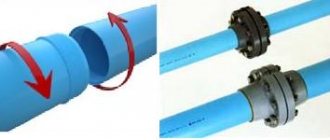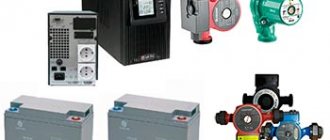During the operation of power supplies, the question often arises of combining several elements into a battery in one or more ways. With a certain connection, as a result, different versions of the main technical indicators of batteries can be achieved at the output. To connect batteries, you must have certain knowledge, which will allow you to avoid premature failure of one of the elements.
Why connect batteries into a battery?
To power some consumers, it is necessary to create a certain value of voltage, current and capacitance, which cannot be achieved when using factory devices. Therefore, it is necessary to use a variety of methods for combining connections. By connecting products into batteries, the following results can be achieved:
- increasing the voltage value;
- increase in operating current range;
- increasing internal capacity.
Important! When changing current values, energy savings are achieved by reducing conductor heating losses.
Different connections of batteries allow you to achieve a variety of parameters, but it should be remembered that the internal energy reading will have different numbers each time the elements are connected.
There are three switching options:
- sequential;
- parallel;
- parallel-series.
When assembling the device, you must remember that it is prohibited to use power sources of different types; such a connection can lead to premature failure of the product.
Increasing voltage while simultaneously increasing battery capacity
A striking example of a mixed or combined connection of batteries in a complex with the necessary indicators of operating voltage and electrical capacity are power supplies for electrically driven machines.
Traction batteries to ensure the operation of drive and control motors of electric drive machines and mechanisms are equipped exactly according to this scheme. The methods of connecting the battery are described in sufficient detail in this video:
A combined connection implies the use of both serial and parallel connection methods in the switching circuit. There are two options:
1. First, batteries with the required operating voltage are prepared using the method of series connection of sources. At the second stage, the required number of prepared assemblies are switched in parallel to provide the required electrical capacity.
2. In the second option, batteries with the required capacity are pre-charged by parallel switching. After this, the devices are connected in series until the required operating voltage is achieved.
The series-parallel connection circuit for batteries is the most commonly used, since modern batteries for autonomous power supply to homes have a nominal voltage of 3.4 V
Equipping batteries using a combined method allows you to create power sources, the voltage and electrical capacity of which are limited only by the workspace they occupy.
Series connection of batteries
When switching power supplies in series, the positive terminal is connected to the common contact, and the negative terminal is connected to the positive terminal of the next battery, and so on, depending on how many cells are in the battery.
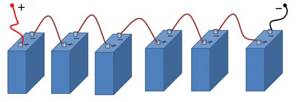
Batteries of the same capacity
As a result of switching identical power sources, the voltage at constant current increases, both during charging and during discharge. The charge when connected in series will have a constant value.
Batteries of different capacities
It often becomes necessary to use cells with different internal charge values in a battery. It is worth remembering that a power supply with a lower value will have the highest internal resistance, as a result, the voltage drop across this element will increase, which will lead to rapid discharge. However, powerful cells will continue to function, maintaining the entire battery in working condition. This factor will lead to a reduction in the charge of a weak battery to the minimum permissible value.
During charge recovery, a weak battery will recover faster than others, although others will still be charging. As a result of this situation, an element with a reduced capacity may be overcharged, which will lead to its heating.
It is important to know! If the charge constantly drops below the permissible level, as well as overcharging, the source will soon waste its resource and fail prematurely.
Parallel connection of batteries
The design feature of this connection is that all positive terminals are connected to one terminal, and negative terminals to another terminal.

Batteries of the same capacity
This connection allows you to achieve an increase in current, while the voltage in a parallel connection remains unchanged. In this case, the capacity value will be equal to the sum of all elements in the system. Thanks to this connection method, it is possible to supply power to high-power consumers with high starting currents.
Batteries of different capacities
When using power supplies in a battery with different voltage values, the total system voltage will be equal to the reading of the strongest cell. Moreover, such use will have a detrimental effect on weak products, which will lead to premature failure.
As a result of parallel connection of high-capacity, low-voltage power sources with low-capacity, high-voltage products, an electrical short circuit will occur in the weak element. This phenomenon occurs due to the difference in internal resistance, while an increased current will flow in a battery with a lower capacity, gradually leading to its destruction.
If the system contains a source of high capacity and increased voltage, then such a connection to the battery will lead to overcharging of the weak power source. Manufacturers recommend equalizing the voltage value before connecting, which will avoid malfunctions during operation.
Important! To avoid the phenomenon of operating current flow in the system, it is recommended to use batteries with equal voltage values.
How to properly connect a radiator indoors?
To ensure a comfortable atmosphere in the room, it is necessary not only to choose the right battery and install it
It is important to take into account the heating features of the entire building.
How to connect heating radiators in a private house
A well-equipped system is important for heating both a large cottage and a compact building. Moreover, it is desirable that heating creates a comfortable atmosphere in the cold season and is not the largest budget item.
There are two ways to connect heating radiators. Both types of wiring (one-pipe and two-pipe) have their advantages and disadvantages.
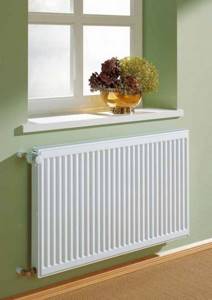
In a two-pipe design, different branches are used to supply hot coolant to the radiator and move cold coolant. When equipping a private house, a horizontal system is installed, which has a number of advantages:
- in all radiators the coolant has the same temperature;
- each line can be equipped with a thermostat;
- easy pipe routing allows you to install the system in a building of any size and layout;
- good energy efficiency.
Disadvantages include high cost, more complex installation, and a large number of materials.
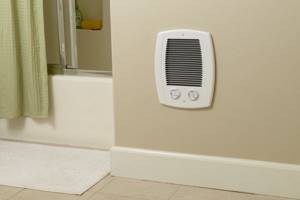
When installing radiators, different pipe connection options are used:
- one-sided (side) - the pipes are inserted on one side, with hot water supplied to the upper part of the radiator, and cold water discharged from the lower part;
- diagonal - pipes are connected at the top (hot water) and at the bottom from different sides;
- saddle - pipes are connected at the bottom of the radiator (located horizontally), from different sides;
- lower - the pipes are connected from below (installed vertically) and are located nearby.
The saddle and bottom connection types are characterized by low energy efficiency. Since hot water circulates at the bottom of the radiator, and the upper area warms up weakly. This feature leads to a loss of energy efficiency (by about 15%) and slow heating of the room.
The one-sided type of pipe fastening ensures uniform heating of the battery and has excellent heat dissipation. Due to the peculiarities of connecting the lines, it is advisable to use it in houses with a small number of radiators (up to 15 units).
The diagonal design scheme can be considered an ideal option when arranging a heating system at home. Since it can be easily installed in houses of any size and has a high heat transfer rate (losses are about 2%).
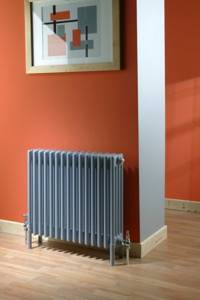
How to properly connect a heating radiator in an apartment
In multi-storey buildings, two methods of organizing heating are used: one-pipe and two-pipe. They determine the option for connecting heating devices.
In the single-pipe type, the coolant moves through a vertical pipe to radiators connected in series. In such a system there is no pipe for discharging waste water. The design is characterized by simple installation and simple maintenance, economical consumption of materials, since there is no need for jumpers, connecting elements and return risers. The disadvantage is the different degrees of heating of apartments on the upper and lower floors. Sometimes there is a difference in air temperature even in the rooms of the same apartment.
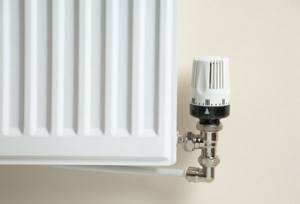
In apartments, batteries are connected according to two schemes: serial and parallel.
- In the series version, the batteries are located directly in the system. There is no way to regulate the temperature of the radiator, and to repair the heating device you have to turn off the entire system and drain the water from it. In apartments with such heating arrangements, cast iron and tubular heating devices are installed.
- With the parallel method, the batteries receive coolant through a pipe connected to a common riser. Cooled water is removed in the same way. Installing ball valves allows you to block the flow of coolants and repair equipment without affecting neighbors.
The main disadvantage is the weak heating of the batteries when the pressure in the network decreases. With this version of the heating system, aluminum and bimetallic radiators are used.
There are no strict requirements for choosing the type of battery connection. The diagonal option is optimal for multi-sectional models. For systems located in the floor, a bottom connection is used. The most typical and common is the side battery connection.

Series-parallel connection of batteries
This method is often used to create batteries with high capacity and increased voltage. Structurally, the sources are initially assembled into a serial chain, gaining a certain voltage, and then several circuits are switched in parallel, while gaining the required capacity. However, there is another method: elements of the same voltage are assembled in parallel, and then they are connected in series.
Connecting devices using this method involves applying the requirements and rules as in the methods described above. An approximate battery connection diagram might look like this:

Battery charge balancing
In order to avoid failure when assembling a battery system using elements of various parameters, it is necessary to carry out constant monitoring. Currently, various devices are becoming widespread that allow for this control during charging and discharging. Such devices include the BMS monitoring and control system.
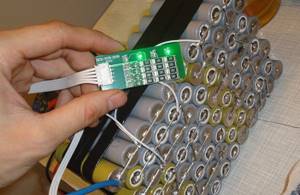
BMS allows you to properly charge and discharge the power source, while the device monitors the condition of the device throughout its entire service life and ensures safety by preventing premature battery failure. The device is manufactured in the form of an electronic board, which is included in the overall design of the power source.
Thanks to BMS it is possible:
- ensure protection of both individual elements and the entire system of devices as a whole;
- increase the service life of power supplies;
- monitor and maintain products of various types in working condition under various conditions of use.
Main functions of the BMS device:
- Monitoring voltage, temperature, readings of charging parameters, as well as serviceable condition.
- Intelligent computing functions, thanks to which it is possible to monitor the main charge-discharge parameters.
- Communication functions, wired and wireless.
- Protection of the product from voltage and current surges, as well as temperature changes.
- When balancing, a uniform distribution of charge occurs between all elements of the system.
Interesting to know! Some complex battery systems use multiple balance boards that control each individual cell.
Proper connection of batteries allows you to achieve certain values of the required parameters. If the operating rules are followed, it is possible to achieve a significant increase in the service life of power supplies.
You may also be interested
.
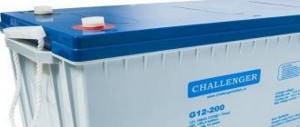
Batteries 0
Selecting a heating battery connection diagram
When the choice of the type of heating boiler is completed, the connection diagram for the heating batteries in the house is determined. It can be single-pipe or double-pipe. The radiator installation itself is carried out in one of three ways:
- bottom;
- lateral;
- diagonal.

Effective heat transfer can be achieved provided that the batteries are optimally placed, or more precisely, by observing the installation distance of the devices in relation to the walls, floor covering, window and window sill. The installation instructions and how to properly connect a heating radiator provide the following standards:
- the device should be located at a distance of 10 - 12 centimeters from the floor;
- it should be installed no closer than 8-10 centimeters to the window sill;
- the back panel cannot be placed closer than 2 centimeters from the wall;
- When installing batteries, it is necessary to provide for regulation of the degree of their heating, both manually and automatically. For this purpose, special thermostats are purchased (more details: “Adjustment taps for heating radiators, valve installation”);
- In order to repair or replace the radiator, valves, valves and manual taps should be provided. They will allow you to disconnect the product from the heating system;
- On the devices you need to install Mayevsky taps, such as in the photo. With their help, air trapped in the system is removed.





